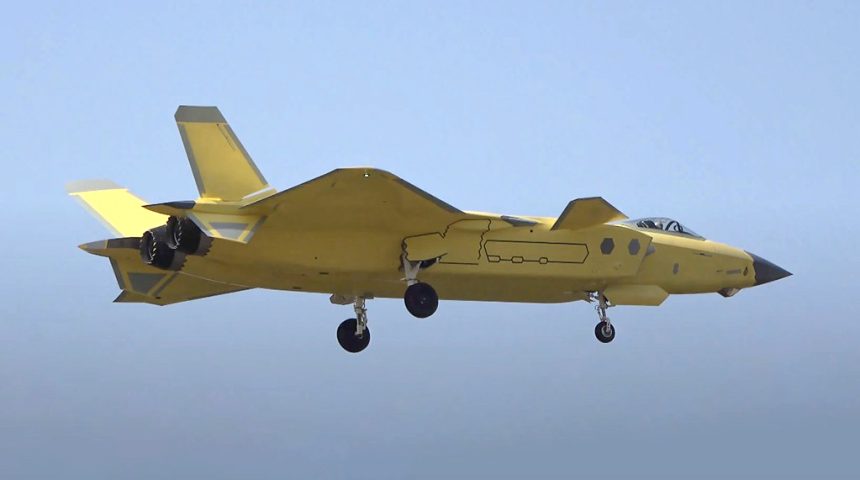Let’s discuss the details we can spot in the exclusive photos captured near the Chengdu Aircraft Industry Group test facility.
A reader of The Aviationist, who wishes to remain anonymous, sent us some very interesting photos of Chinese J-10 and J-20 fighter jets right off the production lines. The photos were taken during a two-day timeframe in November 2023 near the Chengdu Aircraft Industry Group test facility in Chengdu and show aircraft of the latest production batches.
The photos are interesting as most of the images of Chinese aircraft during test flights are grainy or low resolution because, while aviation photography is common practice among many Chinese enthusiasts, it is not always well tolerated. Chinese spotters often face backlash from their own citizens when posting high-quality pictures online, get reported by locals to the police when around an airfield with a camera, and sometimes they even get detained for short periods of time.
In this article we will analyze what can be seen in the images, thanks to the help of Andreas Rupprecht, one of the world’s most authoritative experts on China’s military aviation.
J-20 “Mighty Dragon”
Let’s start from the J-20, China’s first operational stealth fighter.
The development of the J-20 started more or less in the 2006-2007 timeframe, with the goal to design a warplane that would be able to compete with US fighters and with the People’s Liberation Army Air Force endorsing Chengdu’s proposal in 2008. The prototype flew for the first time few years later, in 2011, followed by at least two other prototypes which showed multiple changes, until the design was finalized for mass production in 2017 and the J-20 was inducted into service.
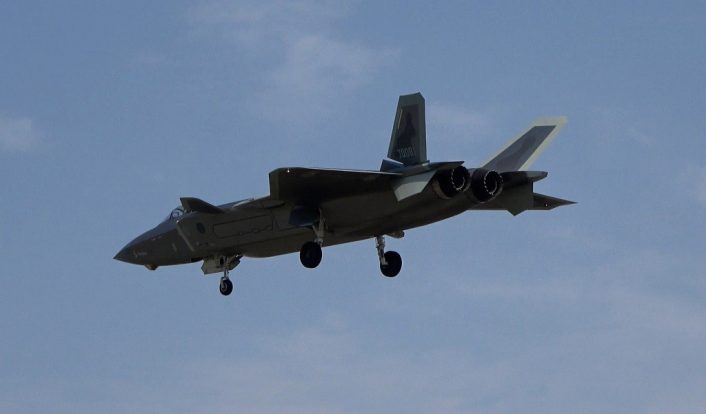
Since 2015 reports noted similarities in technology and capability between the J-20 and US fighter jets, with some even pointing out that some of its technology may have US origin. The J-20 demonstrated that China is beginning to bridge the technological chasm with the United States because of its ongoing intellectual property theft. Because of this, the Chengdu J-20 should not be underestimated, stated a report emerged last year.
Finally as a late Christmas gift, I got information to confirm the first clear images showing J-20s within the 4th AB at Foshan (aka 61x5x serial numbers) and the 97th AB at Dazu (with 70x8x serial numbers) – with both spotting xx = 22. 🥳🥂🍾
So @scramble_nl was right again!👏 pic.twitter.com/iHoocdHiB2
— @Rupprecht_A (@RupprechtDeino) December 30, 2023
In the images we received, we can see three different J-20s.
The first one is the only to be painted in its operational grey livery and sports the tail number 70081, which links the aircraft to the 97th Air Brigade at Dazu air base, as identified by the tail number 70x8x. Rupprecht confirmed that this is only the second aircraft confirmed so far from that unit, which reportedly started the conversion to the J-20 last year, with the first aircraft having tail number 70282.
Interesting comparison of both the J-20 vs the J-20A’s profile and as it seems, the new version’s radome (below) has not only a more beak-like shape from the side but seems to be also different in shape from below/top.🤔 pic.twitter.com/sl5hkUKQaD
— @Rupprecht_A (@RupprechtDeino) October 9, 2023
The other two aircraft are still painted only with primer and no tail numbers or other identifying markings. Both aircraft appear to belong to a late or current production batch, equipped with the WS-10C engines, without the modifications seen on the J-20A prototype number 2052. The new prototype includes a different profile for the Diverterless Supersonic Inlet, a new radome with a beak-like shape, different canopy and fuselage profile and WS-15 engines.
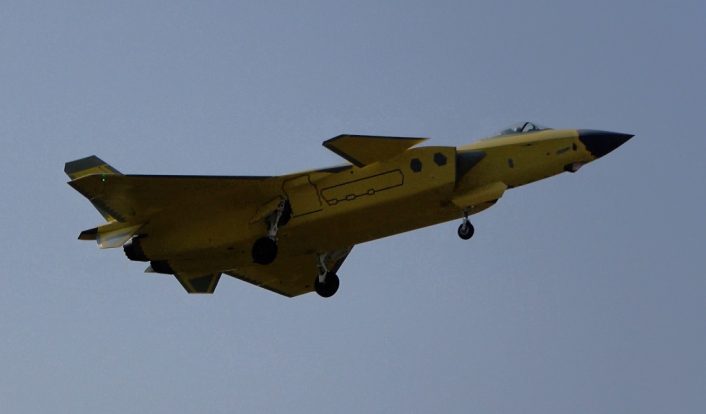
In the past, China powered its fighter jets mainly with variants of the Russian-made Saturn AL-31 engine, which were used as an interim solution on the J-20 in the AL-31FM2 variant. The Saturn engine was replaced by the Shenyang WS-10, which was reportedly derived from both the AL-31 and the CFM56 engine (which powers Airbus A320-series and Boeing 737 airliners, as well as the KC-135R tanker). The WS-10C, however, is an interim solution as the final Xian WS-15 engine undergoes flight testing.
The WS-15 engine, currently installed on the prototype 2052, has a higher thrust-to-weight ratio than the WS-10C, supposedly greater than 10, which will reportedly allow the J-20 to achieve supercruise. The WS-15 engine is also expected to be equipped with thrust vectoring nozzles, however these were not installed so far on the engines tested in flight.
Here’s already a first side profile available for comparison: On top prototype no. 2051 aka eventually J-20B and on the bottom the regular J-20A. pic.twitter.com/tFvLcQ7sGk
— @Rupprecht_A (@RupprechtDeino) December 23, 2022
The WS-15 engines will become standard on the J-20A, whose prototypes are the aforementioned aircraft 2052 and the preceding aircraft 2051. The new variant was initially referred to as J-20B, while the variant currently in service was referred to as J-20A. However, images surfaced online of the prototype 2052 led to a revision of the designation, with the new variant being named J-20A and the one currently in service named simply J-20.
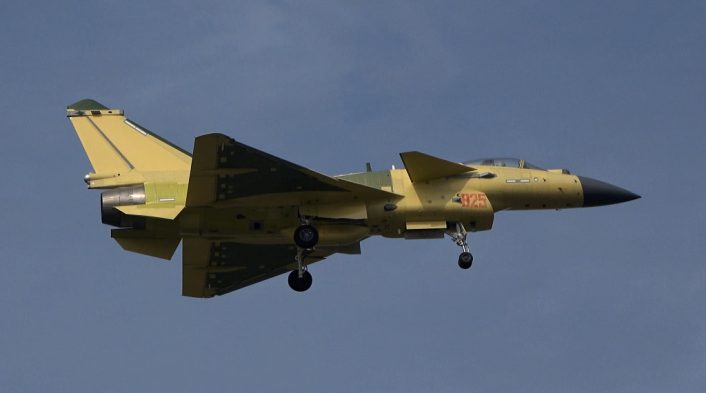
J-10
Let’s now move to the J-10C.
The aircraft was applied a red 825 serial number, which identifies it as a Batch 08 aircraft, specifically the 25th aircraft produced as part of Batch 08. The highest number confirmed so far belonged to a Batch 07 aircraft, told us Rupprecht, the same batch which included the J-10s built for Pakistan.
Like in the other most recent production batches, the aircraft is equipped with the WS-10B engine, as well as new formation lights which were first seen in early 2024 on aircraft delivered to the Northern Theatre Command. According to the info posted on X by Rupprecht, only the 34th Air Brigade at Weihai is currently operating WS-10B-powered J-10Cs in the NTC.
If fact I didn’t notice so far: the formation lights on J-10C fighters have been changed.
Top, the new one on a J-10C assigned to the NTC, bottom an older J-10C.
(Image via Zhang Ziang from https://t.co/dEZ3DWnhuT) pic.twitter.com/I6X19Zce4B
— @Rupprecht_A (@RupprechtDeino) February 20, 2024
The delta-wing J-10 flew for the first time in 1998, with about 500 built as of 2022 for the People’s Liberation Army Air Force. Given its appearance, many believe that the aircraft developed from the Israeli IAI Lavi, with various sources claiming that they had confirmation about the connection between the two aircraft and other denying everything. However, no formal statements have ever been disclosed to address this controversy.
Still quite rarely seen, a WS-10B powered J-10C even if in PLAAF service in at least three air brigades.
Per my list these are the:
34th AB at Weihai (NTC)
25th AB at Shantou/Waisha (ETC)
and either the 16th AB at Yinchuan/West (?) or the 18th AB at Lintao (WTC) pic.twitter.com/5dCYLJpUEJ
— @Rupprecht_A (@RupprechtDeino) December 13, 2023
The J-10 has been upgraded through the years, with the J-10C variant now featuring AESA radar, IRST (Infrared Search and Track) sensor, advanced ECM (Electronic Counter Measures) and an indigenous WS-10 engine to replace the Russian al-31FN engine used by earlier variants. As for the armament, the J-10C is reportedly equipped with PL-10 and PL-15 air-to-air missiles as well as various types of smart air-to-ground weapons. Many of these weapons are also shared by the JF-17.
At the end of 2021, Pakistan became the first export customer of the J-10 with an order of 25 aircraft (36 according to some sources). The J-10, also known as Vigorous Dragon, was first offered to Pakistan in 2006, but the negotiations stalled as the government decided to concentrate resources on the indigenous JF-17 Thunder. In late 2020 it was revealed that Pakistan was still interested in the J-10, and specifically the export variant of the J-10C, called either J-10CE or FC-20E. Some sources claim that Pakistan was working to get its own variant, possibly called J-10CP, but this was not confirmed.
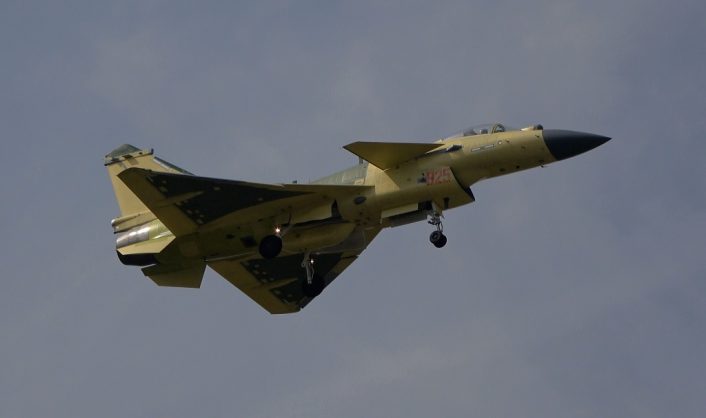
Back to the photos, the J-10C serial 825 sported an interesting detail under the fuselage, between the main landing gear bays. The aircraft has been in fact equipped with a yet unidentified conformal pod, painted with the same primer of the aircraft and with three antennas on its underside, without any other feature that would give away its function.
Rupprecht told us that there are three main theories about the pod. The first one mentions the pod being an electronic warfare or recon pod, the second one sees the aircraft as a replacement for the JL-8/K-8 VISTA aircraft currently used for Flight Control System trials but the third one is even more interesting, as it mentions the possibility of the pod being related to artificial intelligence testing.
Interesting interpretation of the alleged new J-10C variant made by @钢铁机机 from Weibo!
So until the mystery is solved – a recce version (JC-10C), an EW-version (J-10D) or just a new pod or store under test – we need to wait for clear images! pic.twitter.com/i4GboGrcgz
— @Rupprecht_A (@RupprechtDeino) April 3, 2023
Here finally clearer … pic.twitter.com/HUeMvAg6fG
— @Rupprecht_A (@RupprechtDeino) April 3, 2023
The latter might not be the first example of AI tested on Chines jets, as in 2021 there were rumors about an AI algorithm, dubbed “Intelligence Victory”, was being tested on a J-16 Flanker. In that case, the AI was installed in the back seat and was said to be acting as a copilot for the human pilot in the front seat.
China also mentioned in the past the possibility of using AI for training new pilots on the L-15 jet trainer, adapting the training syllabus to each pilot based on the performance during training missions. Also, Chinese pilots were put against simulated adversaries generated by AI during combat training, according to some reports which echoed a similar trial in the United States led by DARPA.

